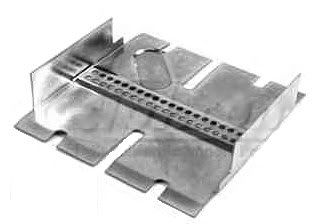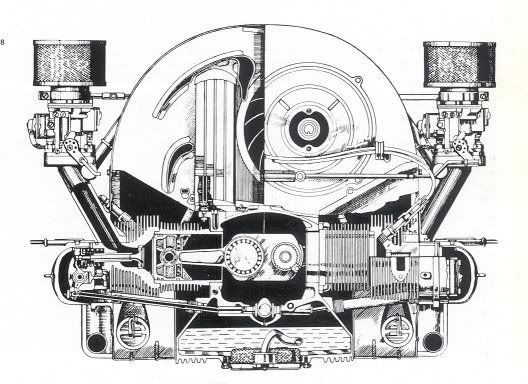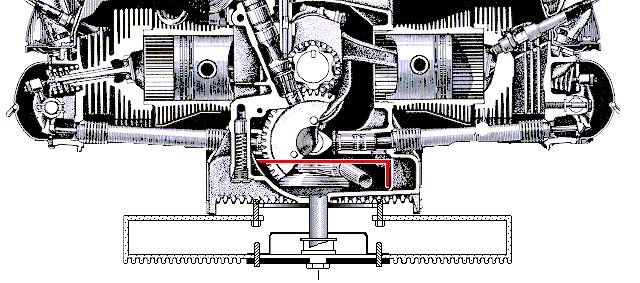
EMPI Windage tray as sold by CIP.

Above: Cross section of a 1950's 1300-1500cc series Porsche 356 Super engine, roller crank and all.
Oil sloshes back and forth and sideways inside an engine oil sump under racing conditions so much that sometimes the oil pickup is sucking air.
The original VW-Porsche case has a reasonably good built-in anti-slosh design, with the sump area contained as the above illustration shows. But even the normal slosh inhibitor design was overcome as braking and cornering power increased.
By the 1960's, Porsche racers had oil forced up through the pushrod tubes into the head on hard cornering, and oil starvation was killing cranks. The factory responded with "windage" pushrod tubes (now commonly sold for VW's) that helped stop unwanted oil transfer, and Porsche racers began to cut and make their own custom windage trays to keep the oil in the sump.
A windage tray is just a piece of metal fitted below the cam and above the oil sump that stops slosh. It has to have provison for enough drainage to let the oil slinging off the main and cam bearing surfaces to return to the sump.
Formula Vee racers embraced windage trays as one of the cheapest racing-reliability parts on the shelf. Windage trays came standard on VW/Porsche Type 4 engines, but never on Type 1's.
For those people building engines that cannot have deep sumps because of ground clearance, the low-tech windage tray is the way to go. We used one on our winning 1600 Carrera Panamericana Ghia and never had a problem.
Conversely, we don't use one on our 2liter+ road course engine because we have one of the 3.5 qt. shallow but wide sumps and that serves the purpose, and we can save the weight of the steel tray.
There is also a little "free power" in the use of a windage tray, as oil that would slosh and make the rods and crank fight to spin through it is reduced. Oil is a lubricant, but just like you doing a hard bellyflop into a swimming pool, you know hitting liquid at high speed is almost like hitting a brick wall.
Drysump engines typically register a HP increase due to reduced "windage friction."

